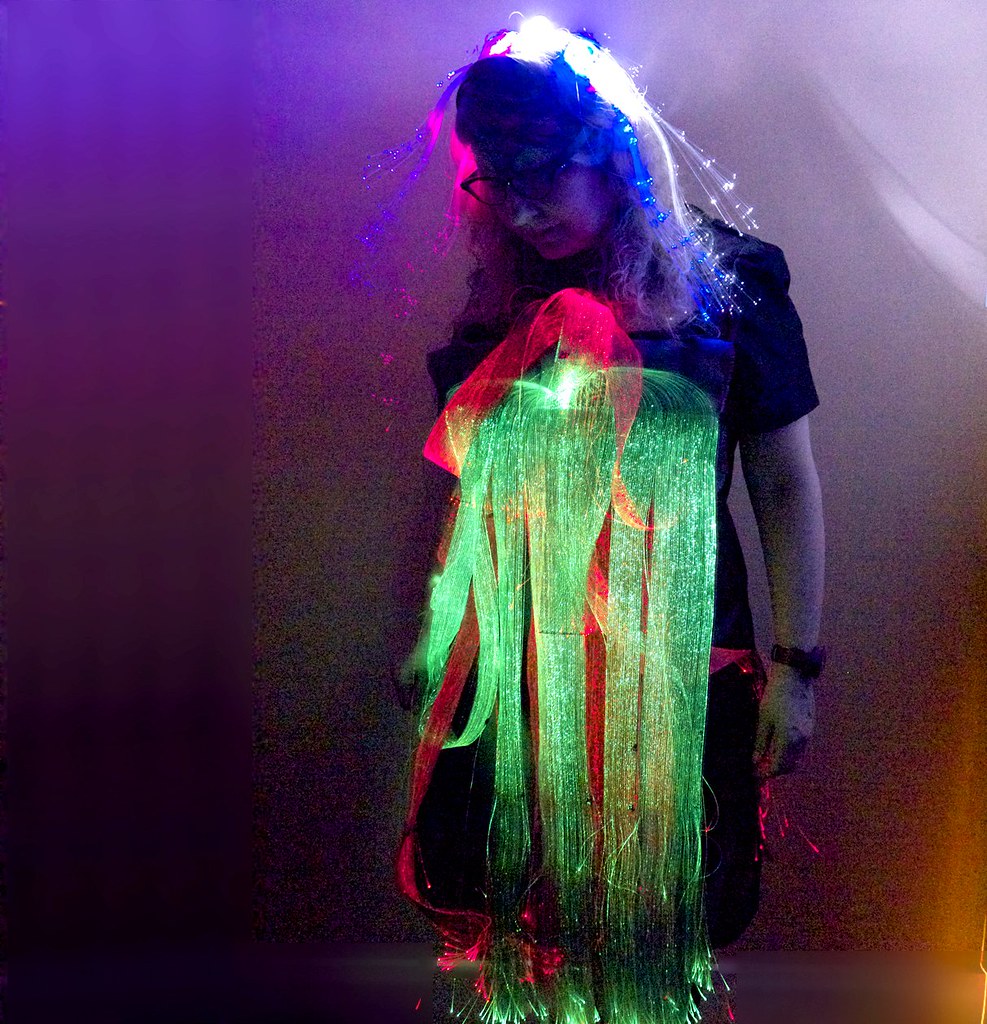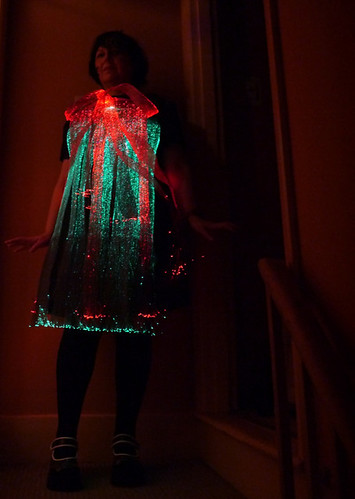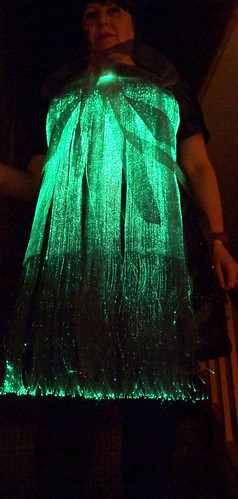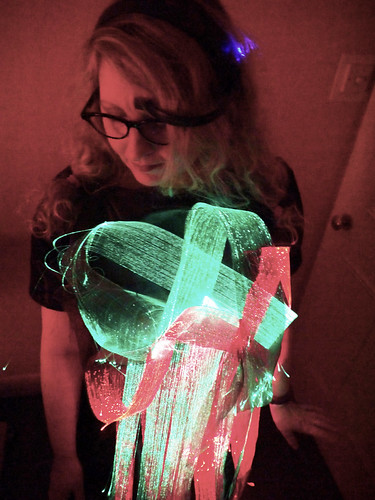 //embedr.flickr.com/assets/client-code.js
//embedr.flickr.com/assets/client-code.js
I’m writing up my PhD thesis at the moment and analysing a huge amount of data from over 70 surveys and 8 hours of focus group audio transcripts. Anyway, without giving away too much about the data, as I’m saving it for my thesis, here’s a little preview of my ThinkerBelle EEG Amplifying Dress. I created this dress in response to a subsection of feedback data from my field trials and focus groups, which investigated the functionality, aesthetics and user experience of wearables and in particular wearer and observer feedback on experiences with my EEG Visualising Pendant. The motivation for creating the dress was for engagement in social situations in which the wearer might find themselves in a noisy or crowded area, where it is not possible to hear others and communicate easily – where forms of non-verbal communication may be useful. The dress broadcasts the meditation and attention data of the wearer for observers to make their own interpretations. It is up to the wearer if they want to divulge information regarding the physiological source of the data being visualised.
A short video of the dress.
A longer video of the dress shot in Tokyo, Japan.
The dress was constructed with a satin fabric and fibre optic filament woven into organza. Using a NeuroSky MindWave Mobile EEG headset signals in the form of two separate streams, ‘attention’ and meditation’, are sent via Bluetooth to the dress, which amplifies and visualises the data via the fibre optic filament. Attention data is shown as red light and meditation signal data as green light. The dress is constructed so the two streams of data light overlap and interweave. The fibre optic filament is repositionable allowing the wearer to make their own lighting arrangements and dress design. The red and green light fades in an out as the levels of attention and meditation data of wearer highten or decline.
The dress’ hardware has a choice of modes, so it is possible to record and playback the data. This makes it possible for the wearer to appear to be concentrating or relaxed if wished to influence a social situation, what I call ’emotive engineering’. Also if the wearer would like to use their EEG data to create a certain mix of colour and light on the dress. It is also possible to set the playback mode and take off the EEG headset if the wearer wants to be headset free. If you’d like to read my ISWC 15 paper on the dress, it’s available from the ACM or ask me for a copy.

Red = attention / green = meditation
As you can see I’ve included a few initial photos of the dress in action showing the EEG data as it is received from the headset. I have not made a successful video of the dress yet, as it’s difficult to light the dress for photos and filming. I will add a video when I’ve worked around this!
I have also been experimenting with changing the form factor of the headset for aesthetic and comfort, using various materials.

Feeling relaxed = very green dress!
A bit of extra info, in case you were wondering… During my PhD research, I’ve been investigating the possibility of that wearable technology can be used with physiological data to create new forms of non-verbal communication. Since 2008 I’ve been experimenting with wearables, sensors and social situations, which led me to focus on wearables. These wearables amplify visualise and broadcast data from the body. As mentioned in previous blog posts, the field of wearable technology has blossomed and grown rapidly in recent years into a huge and mainly undefined set of devices, platforms, uses and practice. It was therefore necessary for me (a couple of years ago now) to create my own nomenclature to define the area I was creating and researching in. The first subset area being ‘responsive wearables’, which deals with wearables that respond to various physiological, environmental and other user related data and gives an output. This worked for a short while but still wasn’t definitive. I went on to drill down and make a new subset of this area to find a better definition for the emerging field I was working in, which I named ‘emotive wearables’. This area focuses on the area of wearable technology which deals with the gleaning of physiological data from the body, processes and broadcasts it in some way from the wearer. The output could be sound, movement, light, etc.
My research with sensors, social situations, ambient and physiological data has led me to work with sound signal input (decibels), temperature (Celsius), pressure (Pascal) and altitude (metres) ECG (Electrocardiography), GSR (Galvanic Skin Response), EMG (Electromyography) and EEG (Electroencephalography), but my main focus for my PhD has been on the development and research of emotive wearables with EEG data.

